The Cote d’Azur conjures up images of brilliant sunshine, shimmering azure-blue seas, fields of lavender, vineyards and olive trees, cream-coloured villas with red-tiled roofs, and museums filled with the works of famed impressionist and twentieth century artists. Our first exposure to the Riviera was through what we called the “Matisse Room”, the guest bedroom on the top floor of a modest but very charming villa called “Lou Baguié”. But first impressions were also permeated by the visions of Monet and Manet, Cézanne and Renoir, Leger and Gauguin and Van Gogh, and ultimately, too, of Picasso. These impressions have influenced how we have incorporated our worldly possessions from a “globally nomadic life” into a uniquely Provençal environment.
And yes, let’s start again: Our first exposure to the Riviera was indeed through what we called the « Matisse Room » on the top floor of the charming villa of my long-standing friends who had coincidentally become, in 1986, my parents-in-law. We were Scrabble partners long before my sister’s husband’s brother’s wife’s brother became my husband. But that is quite another story. Suffice it to say here that my husband and I finally met through this extended family connection and quickly discovered that we were soul mates and wishful global nomads. As Americans with global inclinations, we were all interested in the world beyond the US even though all of our personal interactions with our immediate families, with respect to both his and my families respectively, had been in the US. While this strange mix of global interests with an insular lifestyle is a story for another musing, it serves here to “set the stage” for the impact of Matisse, Picasso, and art appreciation generally, on my introduction to the Cote d’Azur.

First Impressions
After all, it happened that the parents of this global family had bought a retirement home on the Riviera. My new partner and I, both working for very domestically oriented employers, came to visit them there a year after we had formalized our partnership, in 1987. That is when I personally discovered the magic of the Cote d’Azur, a part of the world and of France itself (although I had been many times as a tourist to Paris and the northern parts of Europe) that I had never previously visited. On the first day there, after a long flight from New York that brought us in the early morning to the Nice Airport, enshrined as it was with PALM TREES (surprise!) and a brilliant blue sky above, we were driven by my partner’s father (my new father-in-law) through narrow cobblestone streets of quaint old villages to the villa that they called Lou Baguié just outside the village of Peymeinade. It was a modest but very old and very French villa, where we were welcomed by my new mother-in-law and quickly shown up to their guest bedroom – the Matisse Room – to dispose of our bags before lunch.
Lunch on the terrace, next to a well-kept lawn and garden noticeably flourishing with their personal touches, was followed by our drifting off as we lay down for a nap on the grass in the luxurious warmth of the summer sunshine. As I lay there and looked up through sleepy eyes, oblivious to the world outside this marvellous cocoon, I gradually absorbed the brilliant blue of the sky above that had caught my eye outside the Nice Airport. This time, it was a backdrop for the ever changing puffy white clouds wafting above, even as they seemed to manage their movements without taking away any of the sunshine’s warmth.
Lazily sliding the eyes away from the sky and the slowly drifting clouds, I came upon the incredibly soft hues of a gently sloping hillside filled with the soft green of olive trees, the darker green of tall and sleek cypress trees, and the the red-tiled roofs of homes up along the hillside. It was an awesome and memorable vision, topped off by the sound of distant chimes coming from the church of a distant village silhouetted against the sky high up on the hillside. I described it then and there as a real life version of a Cézanne painting.
As a fan of late 19th century Impressionism, I had always held romantic images of how the artists like Monet and Manet, Renoir and Cézanne had transformed the art world in their days. So I was hooked after that day in the sunshine about the power of the light and colours and sounds and physical sensations of this Cote d’Azur in translating natural beauty into art. And I continue to admire the works of these four – and others that we have come to know in our visits to nearby museums over the years since that first glorious afternoon in the sunshine.
The Matisse Room
Oddly enough, though, it is not so much the Impressionists like Cézanne that have defined the relationship of this part of the world with famous French artists. Rather, it is the 20th century artists who came after them. So it was that our feast of the eyes was quickly translated from the vision outside to the visual charms waiting for us in the “Matisse Room”.  It, too, was entrancing, just as the garden and its hillside view of red-tiled roofs, cypress and olive trees. It was a very bright room on the top floor of Lou Baguié, with a large window and simple white-washed walls with prints from the Matisse Museum in Nice (and elsewhere, to be sure – but mostly local sources). The prints were, of course, copies of the famed “print-outs” from his later years – a blue nude on a white background, a black silhouette of Icarus over a blue background with splashes of yellow, and a multi-coloured floral display, just to mention a few! The colours were brilliant and simple and helped to make the room a charming haven linked to the culture of the region. It remains a very special part of our introduction to the Riviera.
It, too, was entrancing, just as the garden and its hillside view of red-tiled roofs, cypress and olive trees. It was a very bright room on the top floor of Lou Baguié, with a large window and simple white-washed walls with prints from the Matisse Museum in Nice (and elsewhere, to be sure – but mostly local sources). The prints were, of course, copies of the famed “print-outs” from his later years – a blue nude on a white background, a black silhouette of Icarus over a blue background with splashes of yellow, and a multi-coloured floral display, just to mention a few! The colours were brilliant and simple and helped to make the room a charming haven linked to the culture of the region. It remains a very special part of our introduction to the Riviera.
 Matisse, in particular, has played an instrumental role in acquainting us to the Cote d’Azur, although Picasso, too, has shaped our understanding of at least the tourist attractions of this region. The Matisse Chapel in St. Paul, the Matisse Museum in Nice, the Picasso Museums in Antibes and Vallauris (with its panel on War and Peace) are where we take our visitors these days. We have also become regular visitors to museums devoted to Chagall, Leger, Renoir – and then there is the awesome Fondation Maeght in St. Paul de Vence. This latter has played a valuable role in reminding us about the sculptures that came from these many artists – especially Miro and Moore and Giacometti. But it has also been the setting for introducing new artists to our appreciation of the region. (We did visit the famed Colombe d’Or restaurant there once or twice, too, but for us it was just not the same as any of the museums.)
Matisse, in particular, has played an instrumental role in acquainting us to the Cote d’Azur, although Picasso, too, has shaped our understanding of at least the tourist attractions of this region. The Matisse Chapel in St. Paul, the Matisse Museum in Nice, the Picasso Museums in Antibes and Vallauris (with its panel on War and Peace) are where we take our visitors these days. We have also become regular visitors to museums devoted to Chagall, Leger, Renoir – and then there is the awesome Fondation Maeght in St. Paul de Vence. This latter has played a valuable role in reminding us about the sculptures that came from these many artists – especially Miro and Moore and Giacometti. But it has also been the setting for introducing new artists to our appreciation of the region. (We did visit the famed Colombe d’Or restaurant there once or twice, too, but for us it was just not the same as any of the museums.)
Over the years, the prints from this magical Matisse Room have either faded or been dispersed to family members. Lou Baguié no longer remains in the family. In the meandering of our family’s travels since then, we have accumulated a number of Matisse treasures – copies, of course, including two very large posters of a still life and of dancers that have symbolized the genius of Matisse in the use of colours to define the nature of his art.
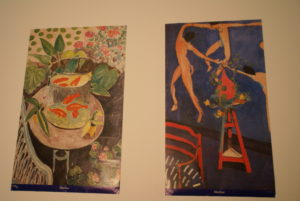
“Colour” is the word that identifies Matisse to those of us who are mere admirers of art, whereas “Line” is the word that more appropriately identifies the famed and prolific Picasso. We understand that the opening decades of the twentieth century featured a rivalry and friendship between these two artists that continued through the better part of the century and helped to define our own overall appreciation of the century’s art, at least for our appreciation of art in the Western world.
The Picasso Room
In Villa Ndio, in contrast to Lou Baguié, we have ended up with a Picasso Room. We didn’t do this intentionally. It just happens that we had a few early prints of Picasso’s famous paintings, such as the Lovers (aka Romeo and Juliet, a 1923 work), Guernica (a 1937 work) and Joie de Vivre (a 1946 work). We even had two copies of his 1956 drawing of Don Quixote. In the course of our years in Europe, we have visited museums in Germany, the Netherlands, UK and Italy, as well as France, with features on both Matisse and Picasso. We did miss the Tate Modern exhibit in 2002 that specifically linked the two, but we do find that our interests have gradually evolved into an appreciation of the role of the interplay between these two major artists that dominated the twentieth century in our own Villa Ndio world. We have our own version of works by Matisse scattered here and there.
As for Picasso, we had managed to pick up a few additional Picasso prints that basically highlighted his skills in simply drawing lines to define a space – a phenomenal talent that he marketed in an unabashed self-serving way. We also knew that he had a preoccupation with female sexuality that was not a part of the Matisse artistic style. We could go on and on, but we basically recognize that Picasso has a lot more personalized depth to his art (i.e. describing his art as his “personal diary”) than Matisse evidently had.
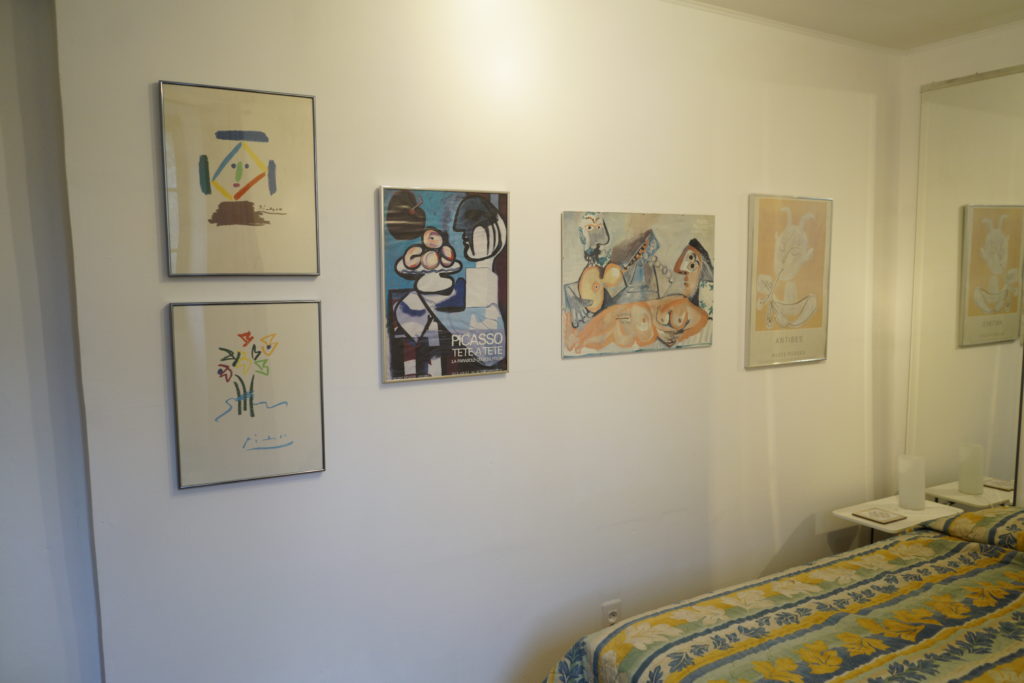
The Impact of 1932
So here we were, drawn by this vague awareness of the twentieth century phenomenon of Picasso the artist, to the latest Picasso exhibit – and first such exhibit devoted exclusively to Picasso at the Tate Modern – to absorb a bit more about this phenomenal artist with the flawed character. One should note, however, that this exhibit was jointly sponsored by the Tate Modern and the Musée National-Picasso in Paris, where it was first on display from October 2017 to February 2018. The exhibit is currently at the Tate Modern from March to September 2018. We were curious to find out why the exhibit was exclusively on Picasso’s art from a specific year, i.e. 1932.
By way of background, we understood that the early phases of Picasso’s fame are serendipitously closely associated with Matisse, when both emerged as revolutionary artists in the early decades of the early twentieth century. We know that Matisse continued to evolve in his own way, and we have valued many of his later works as ever more associated with the Riviera environment of southern France. But the Picasso phenomenon seemed to undergo numerous transformations in the inter-war period, and with a particularly significant turning point in his work in 1932. It is this highly prolific year of 1932 that is highlighted by the latest Tate Modern exhibit. Interesting and odd. 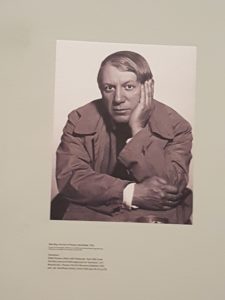 We’re not yet ready to be positive about all of this, but it seems that this year of 1932 saw a phenomenal transformation of his outlook and art – from a middle-aged 50-year-old man looking for new fulfilment in sex and love affairs but anticipating in his paintings the evolution of the world around him “from love to fame to tragedy”. These are the thematic words chosen to describe the Tate Modern’s exhibit.
We’re not yet ready to be positive about all of this, but it seems that this year of 1932 saw a phenomenal transformation of his outlook and art – from a middle-aged 50-year-old man looking for new fulfilment in sex and love affairs but anticipating in his paintings the evolution of the world around him “from love to fame to tragedy”. These are the thematic words chosen to describe the Tate Modern’s exhibit.
The focus on this year of 1932 was not featured in the art history books to which I had been exposed in my liberal arts education of the 1960s. But we did come to appreciate that it was definitely a significant year for Picasso, at least in retrospect, and we can see why the Tate Modern chose to focus on his work from this particular year. For one thing, there was a big change going on in his personal life, and the new love of his life is reflected but also hidden from view in his 1932 works since he was still married to someone other than this latest fantasy. (Much of his later life is, of course, can be defined in terms of a cascading series of relationships that make him appear quite despicable.) But one can also recognize that 1932 was a political turning point, marking the end to the “end to all wars” rhetoric of the 1920s and the transformation of Europe into the cesspool of Nazism, fascism and its allies. Strikingly, Hitler’s takeover of the German government happened in January 1933. So the undercurrents were well on their way in 1932.
In spite of his choosing at some point in his life to associate himself as a Communist, Picasso was not necessarily a political animal. At least, he simply ignored the Nazis throughout his wartime years living in Paris. But the Tate Modern exhibit does take us through the evolution of Picasso’s art month by month in 1932 to show how it moved from a love theme to a theme of tragedy, mostly involving drownings. And then there was, some five years later, his depiction of the horrors of war in his panorama of “Guernica”. So it is easy to equate this “art diary” of his personal life with the political events of the period.
Filling the Picasso Room
On our walls in the Picasso Room, we have three prints of paintings by Picasso from 1932. Two, with strong links to his personal life, are recently acquired prints of paintings from the Tate Modern exhibit, while a third one, more neutral but also signifying his evolving artistic style, was already on our walls. One other, a neo-classical portrayal of the lovers, Romeo and Juliet, dates back to 1923. The rest of our collection emanates from post-World War II works.
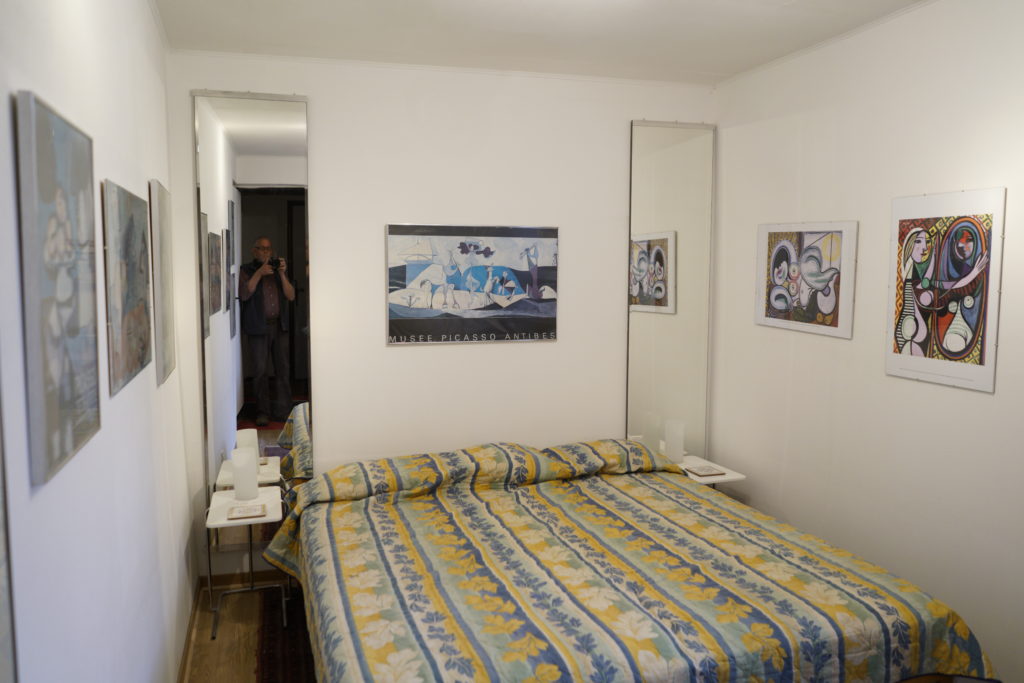
Our favourites are a panorama of “Joie de Vivre” from 1946 (that is drawn from a similar thematic painting from years past by Matisse, and is shown as the featured image for this post) and another of the “Faune blanc”, also from 1946. Another popular motif comes from Picasso’s drawing in 1955 of Dan Quixote, which was drawn for a publication of a literary journal, “Les Lettres Francaises” in August 1955. Two prints, of a bouquet and of a clown, are merely there because they illustrate Picasso’s skill with drawing lines to define the space around them. Finally, the final print in the room is a copy of a painting he did in 1970, just a few years before his death in 1973 – a provocative nude of a woman listening to a man playing the guitar.
It is a serendipitous mix of Picasso choices, but why not? We find that it plays a significant part in our understanding of the Cote d’Azur. We did have a copy of Picasso’s “Guernica” that we had acquired some years back, but it has been water-damaged. Museums in this area do not sell it in their selection of Picasso prints. So we are looking forward to our next trip to Madrid, where the original is currently on display in the Museo Reina Sofia. But even so, it is not something we would necessarily add to our “Picasso Room” since it is already quite full. And since the Picasso Room is a guest bedroom, we rather think that this reminder of the horrors of war might be better placed elsewhere in the house.
Elsewhere in Villa Ndio
In conclusion, we have been inspired to transform at least one of our rooms in Villa Ndio to the phenomenon known as Picasso. We have no regrets so far that we chose to feature Picasso rather than Matisse. We have different lifestyles now, even as we have fond memories of our first introduction to the Cote d’Azur through the Matisse Room at Lou Baguié. But that does not mean that we are at the end of our admiration of artistic impact – of Matisse or of anyone else with a majestic talent and insight through artistic expressions, for that matter. We do like Ferdinand Leger, for example, and have several of his prints throughout our home. The same applies, of course, to Matisse – just different from the delightful array of cut-out samples in that memorable room at Lou Baguié. But we also like and have other Riviera- based artists to appreciate, including Cézanne, but also Gauguin, Monet, Renoir, and Van Gogh.
Then there is the matter of original works. These are more eclectic. The biggest collection is a series of paintings by a little known Vietnamese painter, Nguyễn Hinh, whose originals continue to entrance us in their portrayals of Vietnamese culture and life. See a blog post about them on Peppy’s Villa Ndio website. We also have originals from my days in North Carolina, Nancy Tuttle May, and our life in northern Virginia, Marian van Landingham. And more recently, we have benefited from beautiful watercolours from our dear friend Marietta Foster Smith (again see the post on Peppy’s website) and drawings from a variety of Airbnb guests – plus the chance discovery of a local artist and friend, Leila Zarif, whose family of artists contributed so powerfully to the 2018 celebration of International Women’s Year in Peymeinade. See my earlier post on this. We certainly hope to add original works by them and by other local artists as we get acquainted with them. And of course there are artefacts from our global travels – African and Asian masks, temple rubbings, sculptures and statuettes that help us reminisce about the great world around us.
Villa Ndio is a living organism. Yes, it is a cocoon with a hideaway kind of magic. But it is also a repository of reminders from the vibrant splendour of the world beyond the cocoon. We have a generous dose of regional admiration for the locality that is our anchor, and we continue to welcome learning about the history, culture and spirit of this particular community. We are also deeply drawn into this place because of the ways that we can connect the particular to the world around us, the local to the global. I conclude this “musing” by reaffirming that we will continue to savour the wonders of this life here while also exploring its linkages to the mysteries of the world beyond.

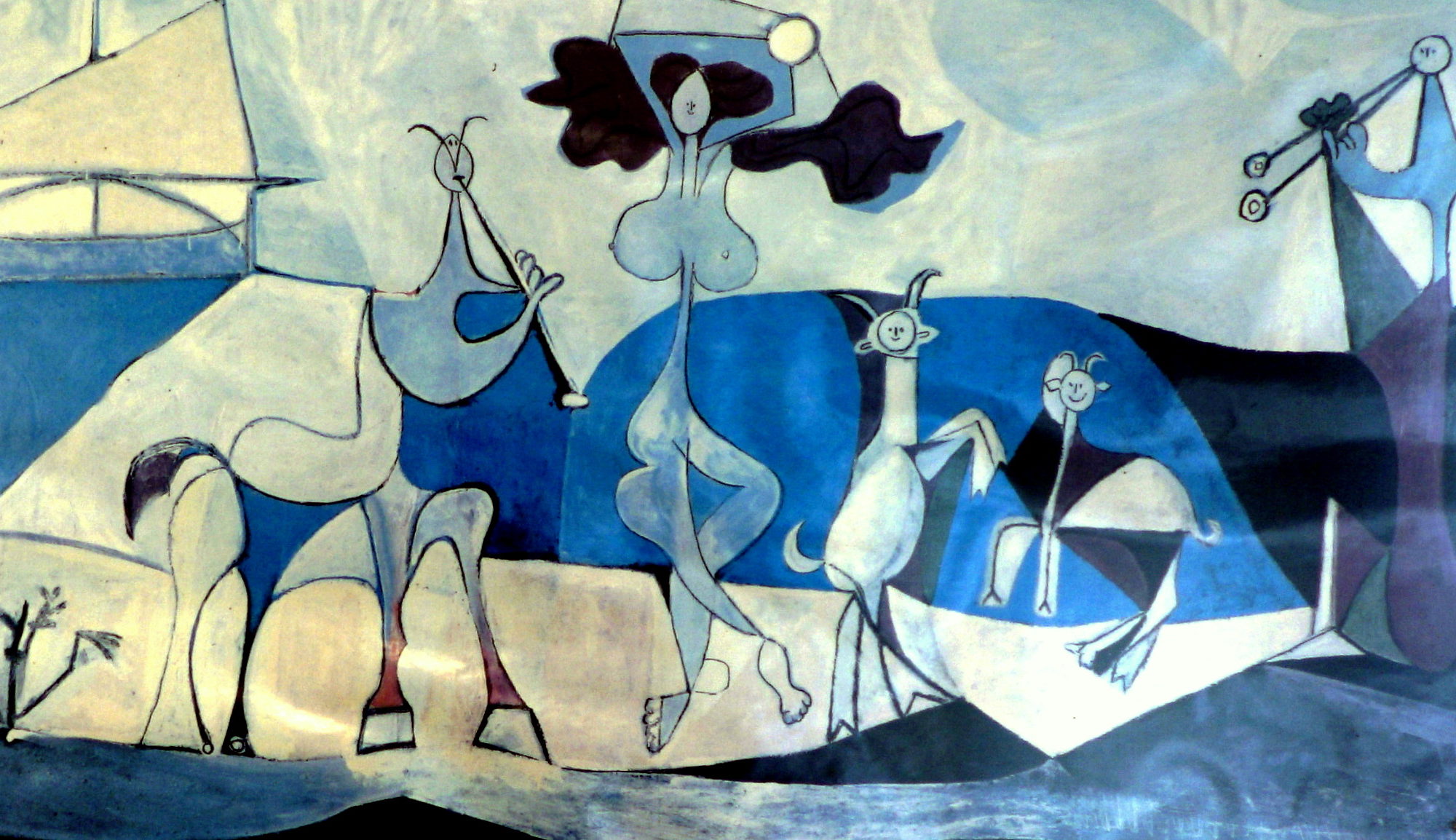

Hi there! Such a wonderful write-up, thanks!